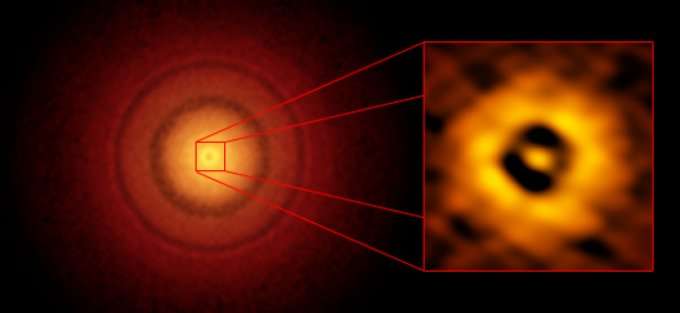Dusty protoplanetary disks

Planetary systems form out of disks of gas and dust around young stars. How the formation proceeds, however, is complex and poorly understood. Many physical processes are involved including accretion onto the star, photoevaporation of material of the disk, interactions of the disk with planetary embryos, growth of the dust grains, settling of the dust to the midplane of the disk, and more. To unravel these various factors, observations of protoplanetary disks at multiple wavelengths are used; the submillimeter wavelength range in particular offers a way to peer through most of the disk to estimate dust masses directly.
Surveys of star forming regions with facilities such as Submillimeter Array (SMA) and ALMA have determined that disks have typical masses of 0.1%–0.5% of the host star. CfA astronomers Sean Andrews and David Wilner were members of a team that used these two facilities to study systematically the dust in 284 protoplanetary disks in three nearby star formation regions. They find clear evidence for grain growth from the spectral shape of the emission, at least for two of the regions. The result, which is in agreement with previous work, is indicative of the early stages of planet formation.
They also find that the average temperature of the dust is between about 40-50K in all the examples. Their study suggest that the disks in the three regions are all similar, though with individual variations, a result that was mildly surprising since evolutionary effects were thought to become more apparent. The team now plans additional observations to compile better and more complete statistics.
More information: Álvaro Ribas et al. Far-infrared to Millimeter Data of Protoplanetary Disks: Dust Growth in the Taurus, Ophiuchus, and Chamaeleon I Star-forming Regions, The Astrophysical Journal (2017).
Journal information: Astrophysical Journal
Provided by Harvard-Smithsonian Center for Astrophysics




















